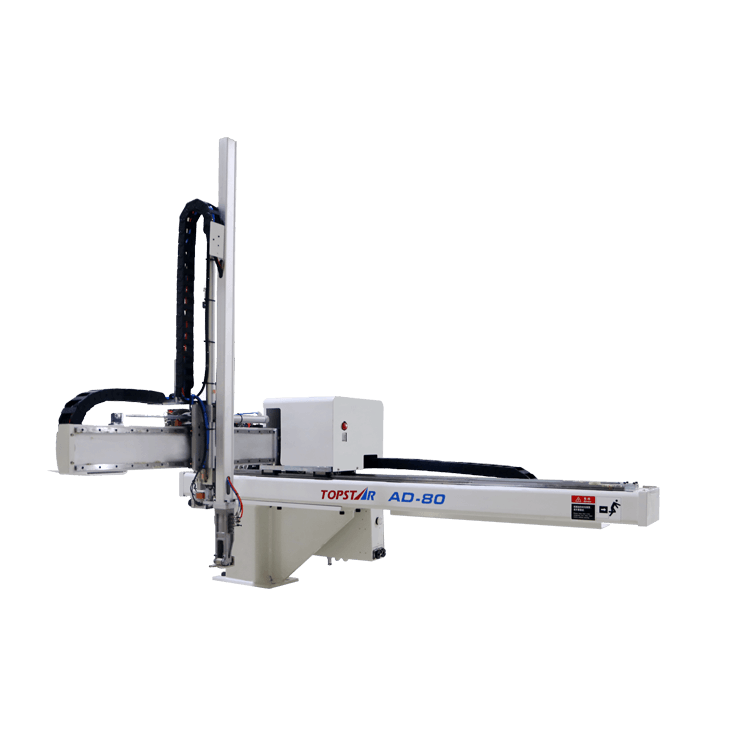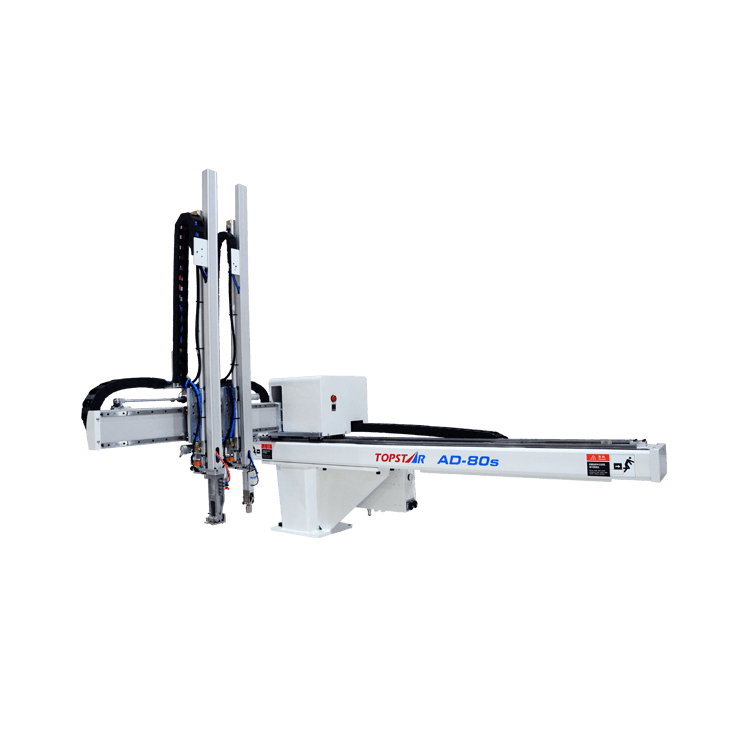
Robots are an essential part of many manufacturing processes. They can improve the speed and efficiency of specific tasks, which is particularly important in plastic injection molding. Robots designed for this purpose will help your company produce more parts in less time without sacrificing quality. Today, we will explain what makes robots suitable for plastic injection molding and how these machines work with other devices to make molds quickly.
Designed for specific applications
Robot systems are designed to perform specific tasks and do not have general-purpose capabilities. They can perform tasks humans cannot, such as locating and moving parts around on a production line or performing complex operations in hazardous environments.
Robots are not autonomous because they require human operators to direct their movements. However, some robots may operate semi-autonomously without a human operator using preprogrammed instructions with little need for human intervention (e.g., for some types of assembly).
The robot is equipped with a camera
The robot is equipped with a camera. It’s used for quality control and inspection of parts at different stages of production.
It’s also used to monitor the work of employees. The robot can count the number of parts or products produced by a worker, and it can measure their dimensions as well. It can even detect if someone has moved components from one place to another or been damaged during production.
Purpose of the camera on the device
The camera is also used in quality control, where it can be used to inspect parts for defects. The inspection ensures that the legs meet the required specifications and are free of damage or imperfections.

Fully automated
Robots are fully automated and capable of performing tasks without human intervention. They can be used in various manufacturing processes, including molding, machining, and welding. Robots can be programmed to perform specific functions using CNC machine tools or industrial robots.
Robots are capable of working 24/7, 365 days a year, without breaks or downtime, which makes them an ideal solution when it comes to increasing productivity while reducing costs associated with labor costs.
Requires regular maintenance and lubrication
Robots need regular maintenance and lubrication. For example, as a plastic injection molding robot performs its repetitive tasks, it’s essential to check that the bearings are adequately lubricated. This ensures the approaches stay in good condition and don’t wear out prematurely due to friction or metal-to-metal contact. In addition to lubrication, robots also require cleaning to avoid cross-contamination of parts or materials within the injection unit. Regular inspection for damage or wear on moving parts such as gears or cams is necessary.
It is essential to improve manufacturing productivity.
Robots are used in various industries and can improve the efficiency and productivity of your manufacturing process. Robots are great because they allow you to perform tasks that humans cannot, such as performing tasks repeatedly or in dangerous or challenging environments. For example, if you have an assembly line where plastic parts are being made by hand, robots can help automate this process so that it runs more smoothly and efficiently.
Robots also provide more consistency than human workers because they don’t get tired or make mistakes like humans. This makes them better suited for repetitive tasks such as plastic injection molding. Robots also take up less space than humans working on an assembly line. This means more robots can fit into the same room as fewer humans would occupy!
So
We have seen some benefits of using robots in the plastics industry. These machines allow for increased productivity and reduced costs while improving customer satisfaction with faster delivery times and a better quality product. They are also versatile enough to handle many different materials without much adjustment.
However, these benefits do come with some drawbacks as well. For example, they can be expensive upfront because they need significant capital investment. They require highly skilled workers who know how to operate them correctly. And there may be higher maintenance costs associated with regular lubrication maintenance needed for these machines. For companies to reap all these advantages, though.
TRENDING POSTS
HOT TOPIC
- 3 in 1 Compact Dehumidifying Dryer
- accuracy
- Air Chillers
- and overall production quality. Therefore
- AP-RubberPlas
- automated injection molding machine
- Automation changed engineering
- automation of injection molding robots
- auxiliary machine
- Bench Injection Molding Machine
- Cabinet dryer manufacturers
- Cabinet dryers
- CNC Drilling Machine
- CNC Drilling Machines
- cnc engraving machine manufacturer
- cnc laser cutting machine manufacturer
- CNC machine
- CNC Machine Center
- CNC Machine for Sale
- CNC Machine Manufacturing
- CNC Machine Tool
- CNC machine tool product
- CNC Machining Center
- CNC wood carving machine
- Cooling system
- Cross-Walking Single Axis Servo Cylinder Robot
- Cross-Walking Single-Axis Servo Cylinder Robot
- Cross-Walking Three-Axis/Five-Axis Servo Driven Robot
- cross-walking three-axis/five-axis servo-driven robot
- Dehumidifier Dryer
- delta parallel robot
- Desktop Injection Molding Machine
- Desktop injection molding machines
- Desktop Molding Machine
- desktop plastic injection machine
- Desktop Plastic Injection Molding Machine
- direct clamp injection molding machine
- Direct clamp injection molding machines
- Dosing & mixing system
- Drilling Centers
- Drying and dehumidification system
- drying and dehumidifying equipment
- Drying and Dehumidifying System
- drying system
- effective and efficient. Cabinet dryers are also used in other industries where large quantities of material need to be dried
- efficient injection molding machine
- elbow hydraulic injection molding machines
- electric injection molding machine
- etc. Among injection molding robots
- exhibition
- features of CNC machine
- Feeding And Conveying System
- Five Axis Machine Center
- Fully automatic injection molding machine
- Gathering Topstar
- giant injection molding machine
- GMU-600 5-Axis Machining Center
- Granulating & Recycling System
- Heavy duty injection molding machine
- Honeycomb rotor dehumidifier
- horizontal injection molding machine
- Horizontal Injection Molding Machines
- Horizontal Injection Moulding Machine
- Horizontal Mixer manufacturer
- How The CNC Machine Works
- hybrid injection molding machine
- Hydraulic Injection Molding Machines
- in this article
- Industrial robot
- Industrial Robot Chinese brand
- industrial robot parts
- industrial robot supplier
- Industrial robots
- Industry Chain
- Injection Manipulator
- Injection molding
- Injection molding automation
- Injection Molding Automation Solution
- injection molding dryer
- Injection molding equipment
- injection molding hopper dryer
- Injection molding machine
- injection molding machine brand
- Injection Molding Machine Factory
- Injection Molding Machine Manufacture
- Injection molding machine manufacturer
- Injection molding machine procurement
- injection molding machine robotic arm
- injection molding machine with a robot
- Injection molding machines
- injection molding material dehumidifying
- injection molding plant
- Injection Molding Robot
- injection molding robot arm
- Injection molding robot automation
- Injection molding robotic arm
- injection molding robots
- Injection Moulding Robots
- Injection Robot
- Injection robot arm
- Injection robot manufacturer
- Injection robot wholesale
- injection robots
- Introducing Injection Robot
- It is the best choice for drying large quantities of material at once. Cabinetmakers use these machines because they are fast
- large injection molding machine
- Learn what industrial automation and robotics is
- low speed sound-proof granulator
- machine plastic molding
- make sure to add some! Improvements (2) Keyphrase in introduction: Your keyphrase or its synonyms appear in the first paragraph of the copy
- manipulator machine
- manufacturing
- micro injection molding machine
- middle speed granulator
- Mini CNC machine manufacturers.
- Mold Temperature Control System
- mold temperature controller
- molding material Dehumidifying System
- mould temperature controller
- New electric injection molding machine
- nitrogen dryer manufacturer
- nitrogen dryer system manufacturer
- Oil type mold temperature controller
- open day
- Outbound links: No outbound links appear in this page. Add some! Images: No images appear on this page. Add some! Internal links: No internal links appear in this page
- PET Preform injection molding
- plastic bottle making machine
- plastic bottle manufacturing
- plastic bucket making machine
- plastic bucket manufacturing
- Plastic chair making machine
- plastic forming equipment
- plastic hopper dryer
- plastic injection machine
- plastic injection machines
- plastic injection molding
- Plastic injection molding machine
- Plastic Injection Molding Machines
- plastic injection robot
- Plastic Molding machine
- plastic molding press
- plastic phone case making machine
- plastic-molding machine
- powerful granulator
- Powerful Type Sound-Proof Granulator
- production of plastic seats
- Robot injection molding
- robot injection molding machine
- robot manufacturing companies
- Robotic arm for injection molding machine
- robotic injection molding machines
- robotics in injection molding
- SCARA robot
- Service-oriented manufacturing
- Servo Cylinder Robot
- servo driven robot
- Servo Driven Robots
- servo injection robots
- Servo-Driven Robot
- Setup of injection machine
- Silicone Injection Molding Machine
- six-axis industrial robot
- Stainless Hopper Dryer
- Stainless Hopper Dryers
- star club
- swing arm robot
- the choice between servo-driven robots and hydraulic robots will have a certain impact on efficiency
- the most popular injection molding machine
- the type of injection molding robot
- toggle clamp injection molding machine
- Toggle Hydraulic Injection Molding Machines
- toggle injection molding machine
- Top 10 brands of injection robots
- Topstar
- Topstar Engineering
- Topstar injection molding intelligent
- Topstar Scara Robots
- Useful Injection molding machine
- Vertical machining centers
- volumetric type blender
- water distributor
- Water Type MoldTemperature Controller
- We often face choices when performing injection molding. We will choose the type of injection molding machine
- wholesale of injection molding machines
- x carve CNC
